On January 4th we finally landed in Mexicali, the closest airport to our destination, Puerto Peñasco (in the image above is the monument to the shrimp fisherman, in the central square).
We immediately realized that it would be very uncomfortable to live on our boat, due to the temperature that at night dropped around 3-4 degrees. After a bit of research, we managed to find a small apartment, equipped with heating, quite close to the shipyard where we had left Zoe. We agreed for a period of 15 days in the belief that the temperature would rise and we would complete the due work on the boat. Both of these predictions have proven to be vastly underestimated. In the end we stayed in Puerto Peñasco until February 25th!
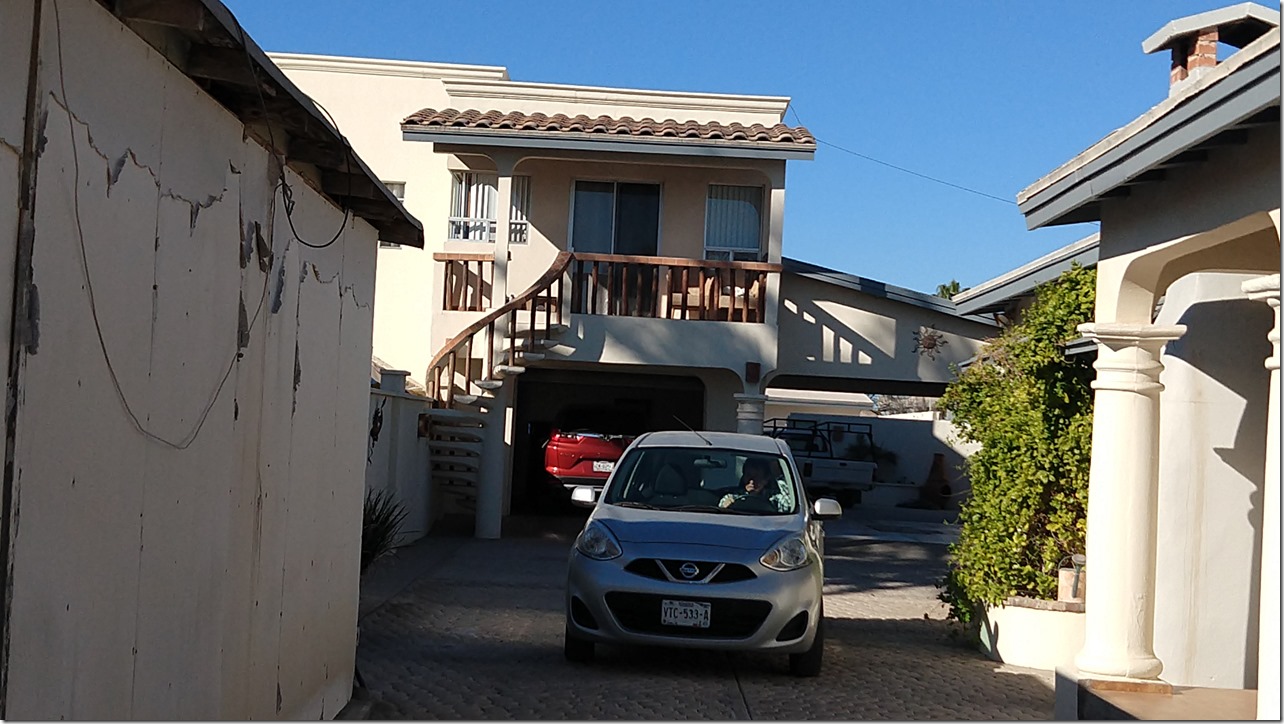
Our house (on the upper floor)
Puerto Peñasco is a town that at first strikes you for the sand that invades everything, with the streets that are either covered with it or that are just made of sand. This is not surprising as the desert is right behind the city.
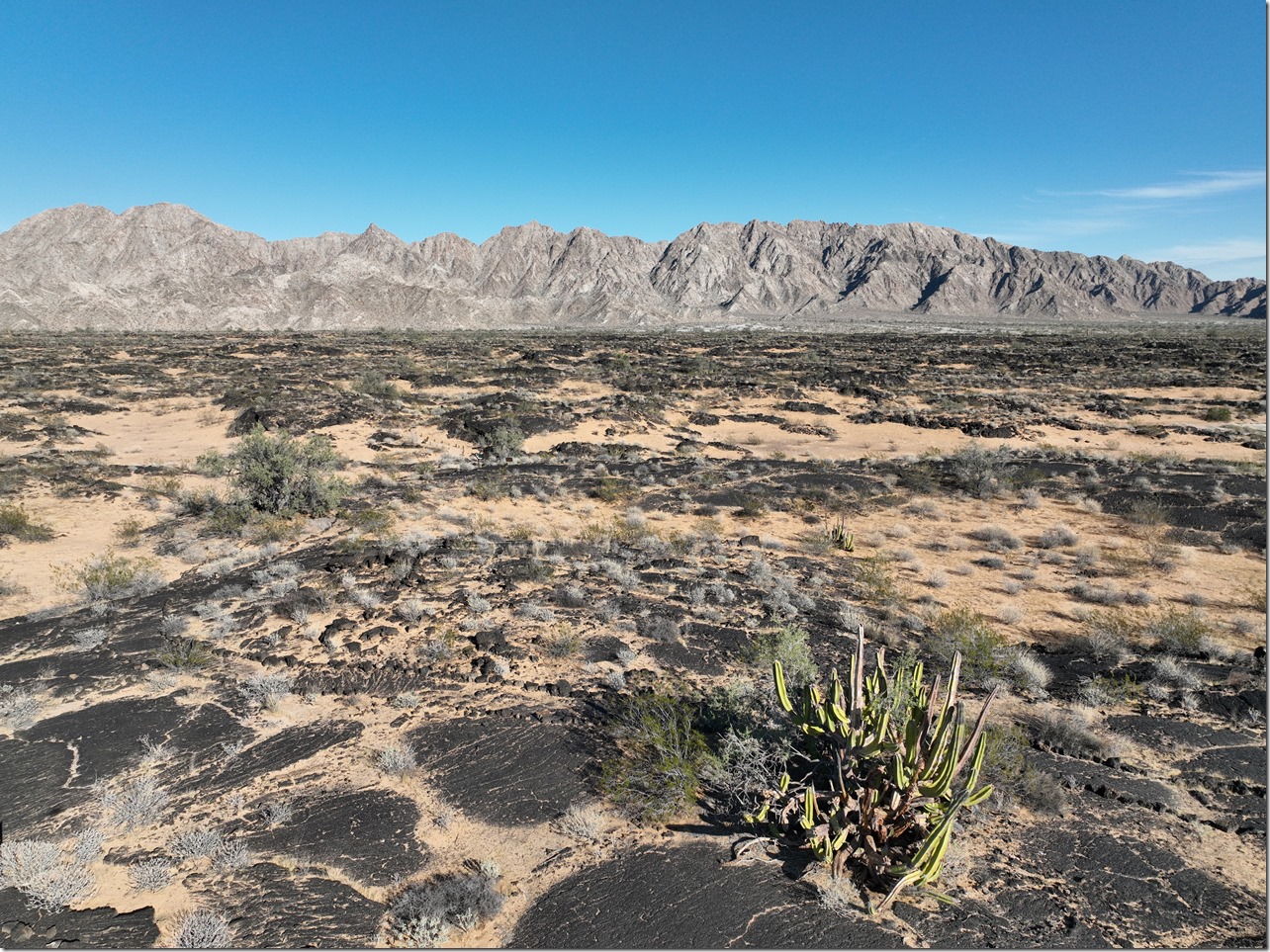
Pinacate Desert
The main activity is shrimp fishing; every day several fishing boats, after loading large amounts of ice, leave the picturesque port to launch their nets. Many trucks leave every day to transport tons of shrimp to the rest of Mexico and the United States.
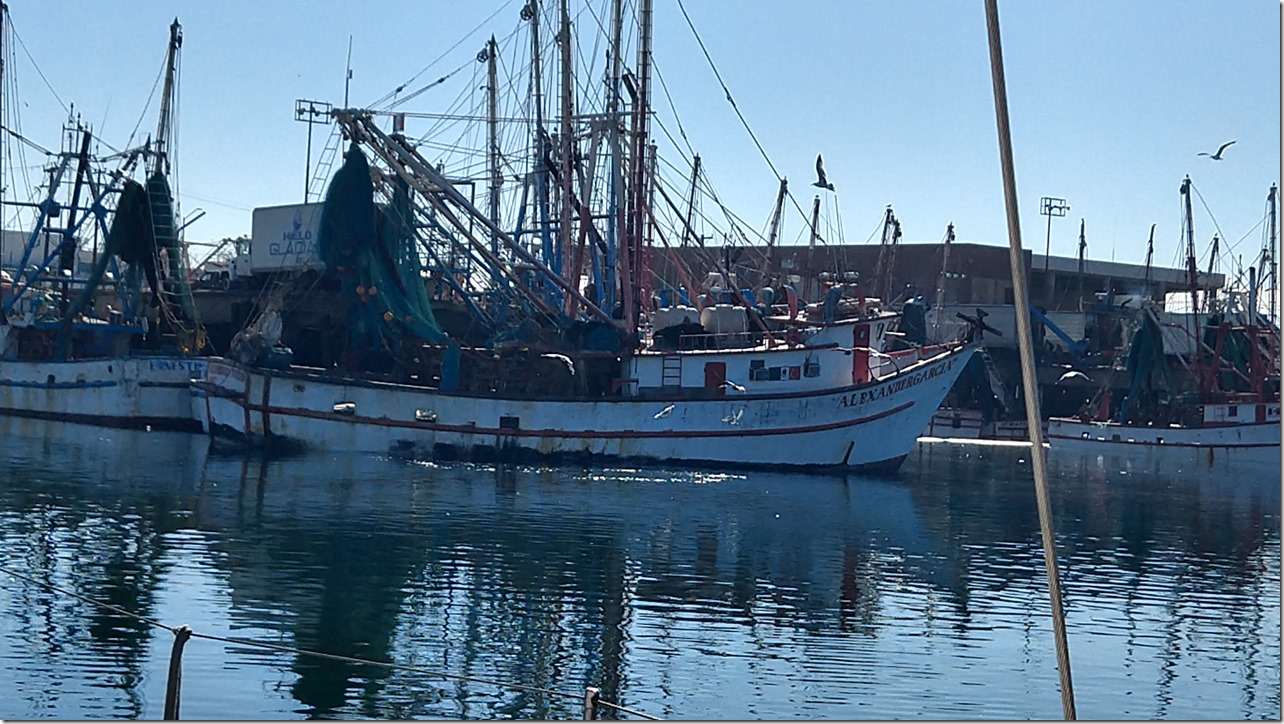
Merchant port
An emerging activity is tourism; condos and hotels with dozens of floors are rapidly changing the coastal landscape. The tourists are mainly from the USA, especially from Arizona; the US border is only an hour’s drive away.
We took a flight from Mexico City to Mexicali, and from there it took us about 3.5 hours to get to Puerto Peñasco by car, crossing a panorama of desert dunes whose pinkish color contrasts spectacularly with the intense blue of the sea. As soon as we arrived in the city and after deciding which apartment to rent, we went to the Cabrales shipyard to see Zoe, who appeared in excellent condition, apart from the layer of sand that covered a bit of everything. The protective tarpaulins had held up very well, the inside was dry and exactly as we had left it.
In the following days we acquired the routine of going to the shipyard around 10 am, when the outside temperature became milder; we stayed to work until sunset with a short break for lunch that we either consumed in the apartment or in the Marisco Rey kiosk where we enjoyed excellent tacos and cocktails of shrimp, octopus and crab; all seasoned with the sympathy of the family that ran this small kiosk, always crowded.
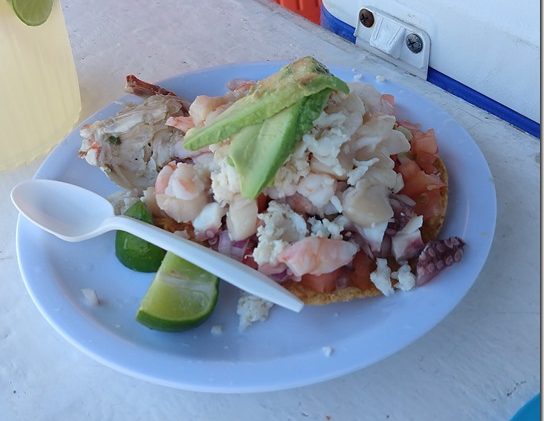
Shrimp, octopus and crab taco
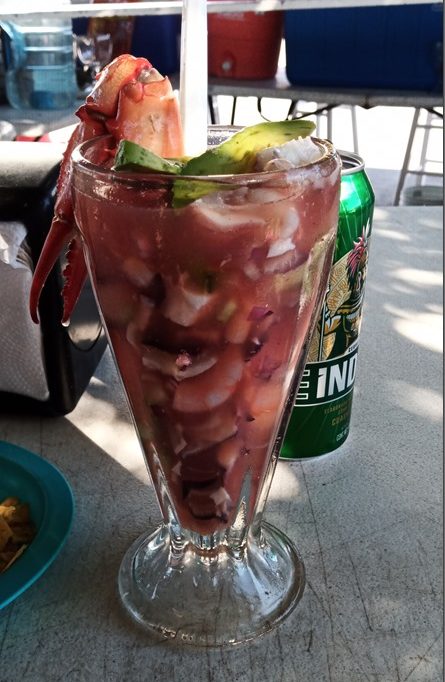
Shrimp, octopus and crab cocktail
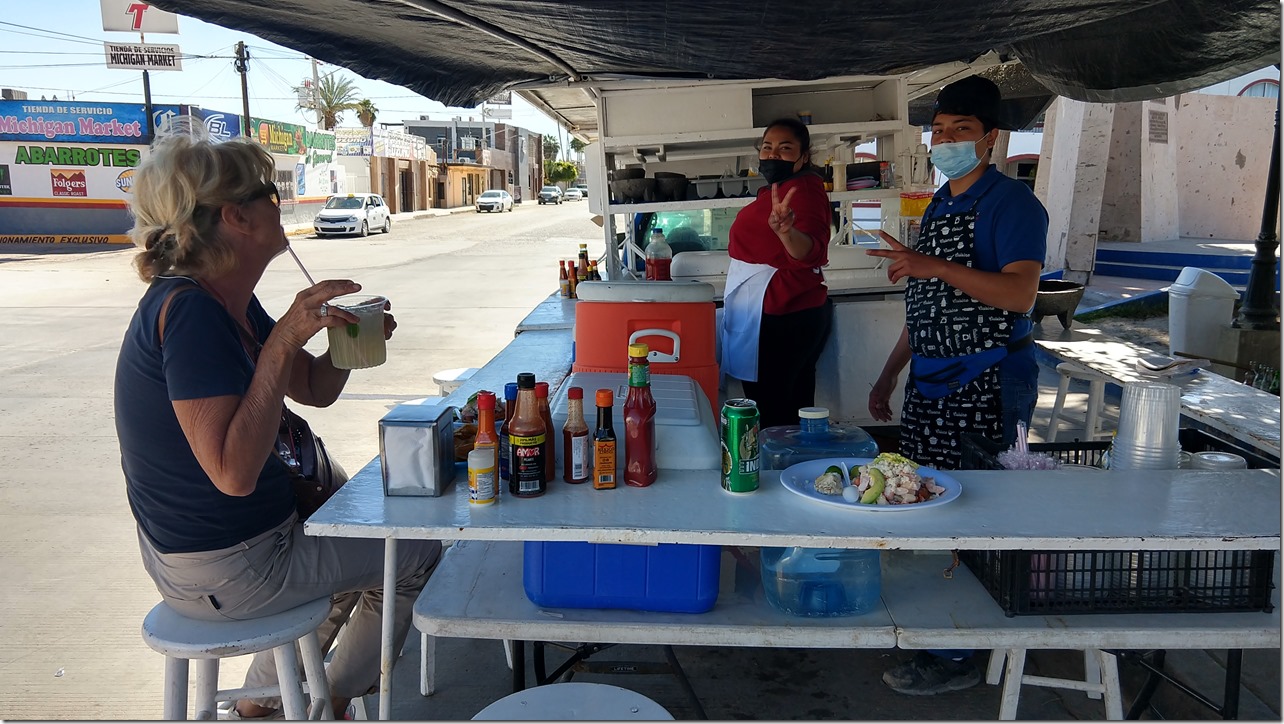
Marisco Rey Kiosk
On Sundays we generally went to visit the surroundings. In addition to the desert of Pinacate where there is also an interesting and well-kept museum, one of our destinations was an oyster farm of which we favored in great abundance and where we met a nice family who gave us some beers that we didn’t think to bring.
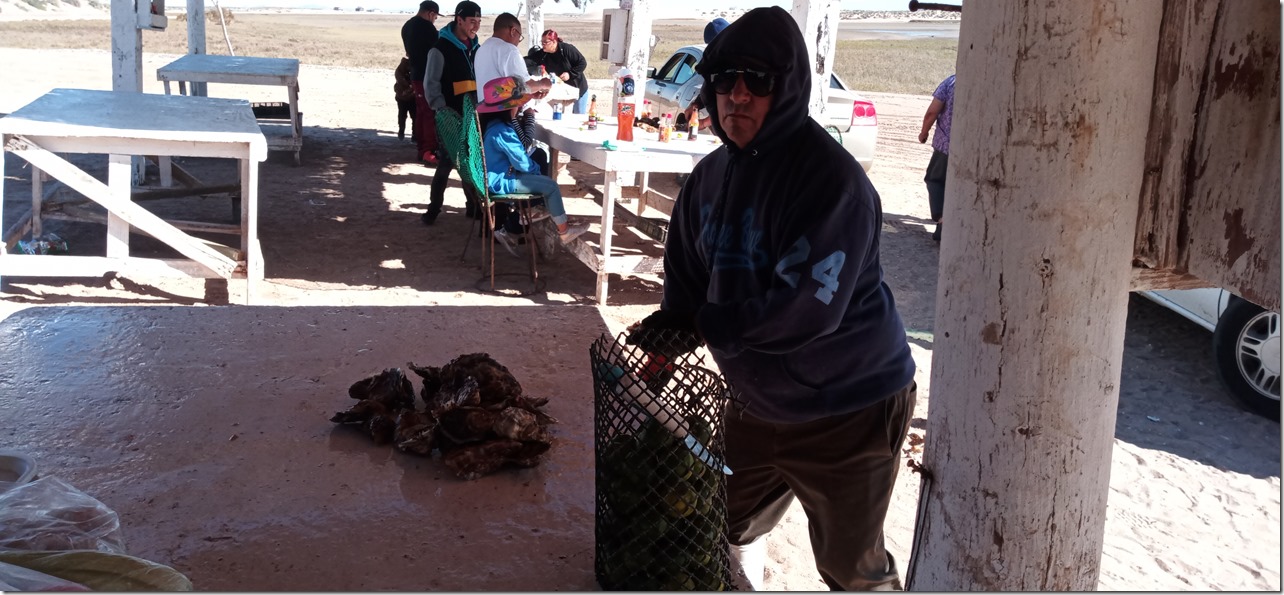
Oyster breeder
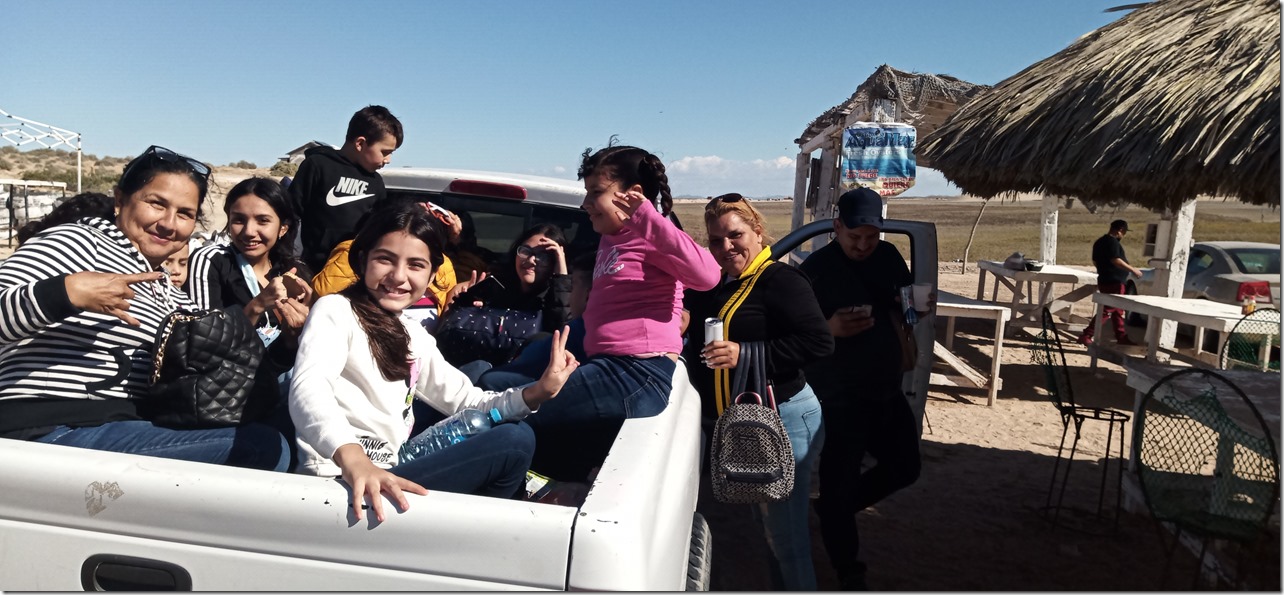
Birthday party at the oyster farm
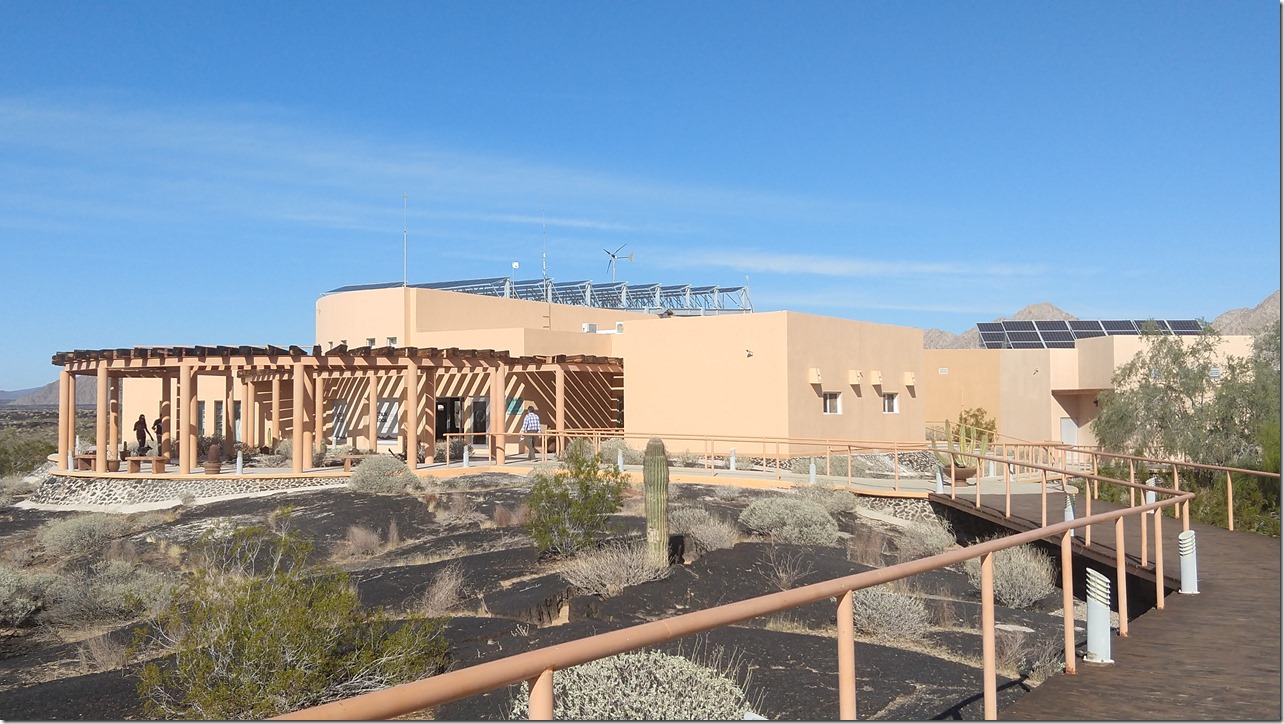
Pinacate Desert Museum
We had planned several maintenance works, however various other unforeseen events made the list longer: most problems were mainly related to the long dwell time. The first “surprise” (but a bit we expected it) were the batteries, which after two years of continuous charge and 6 years of service have given forfait. To these were added several other small surprises, which led us to make two trips to San Diego and one to Tucson to recover spare parts and materials for the work. We obviously took advantage of these opportunities to enjoy a few days to visit the beautiful city of San Diego with its many attractions.
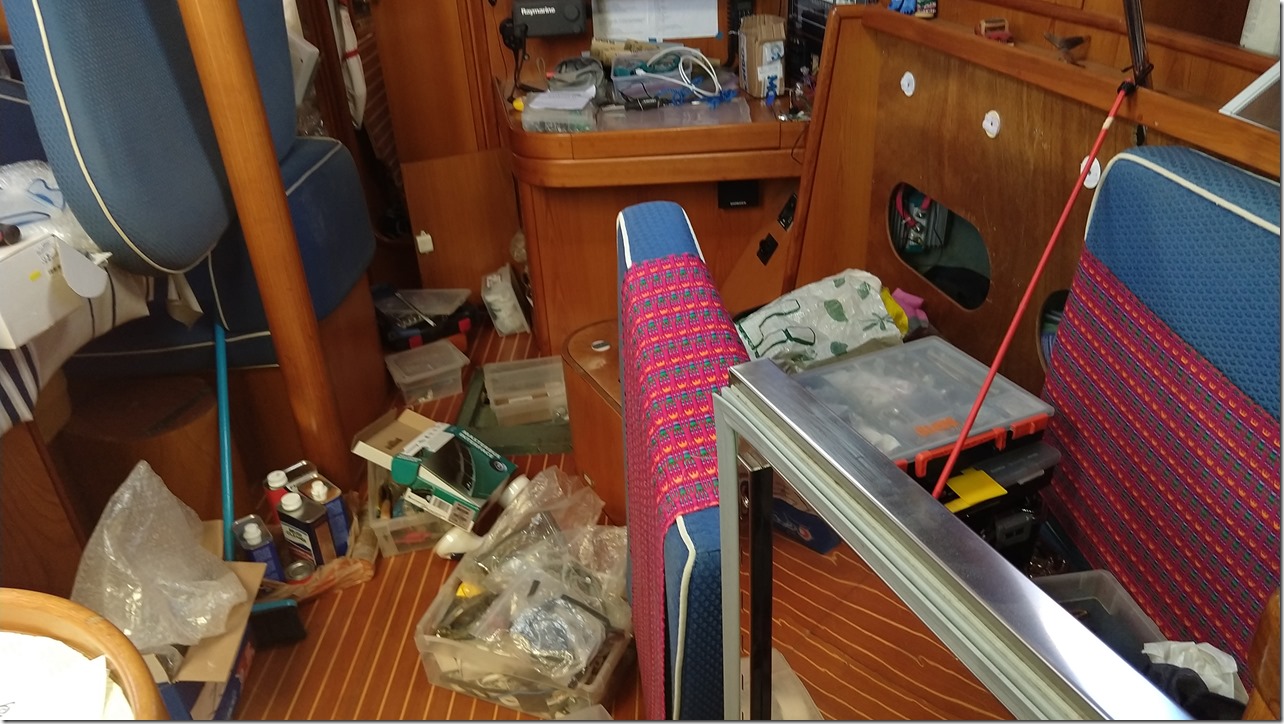
Work in progress
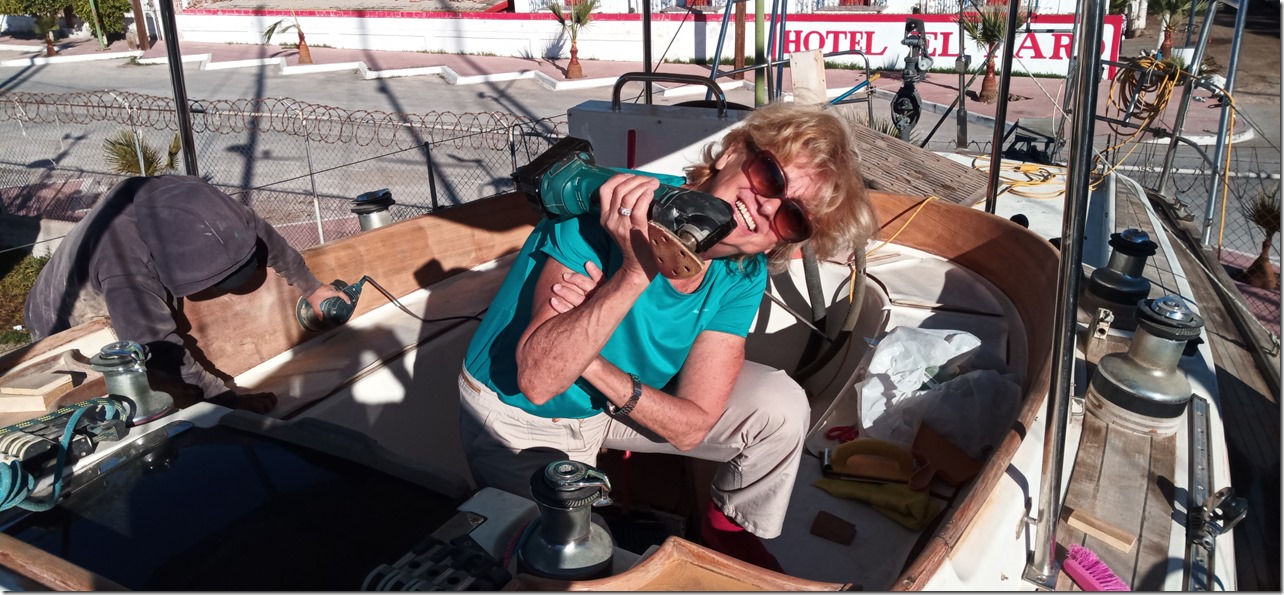
Sanding and preparation for painting the paramare
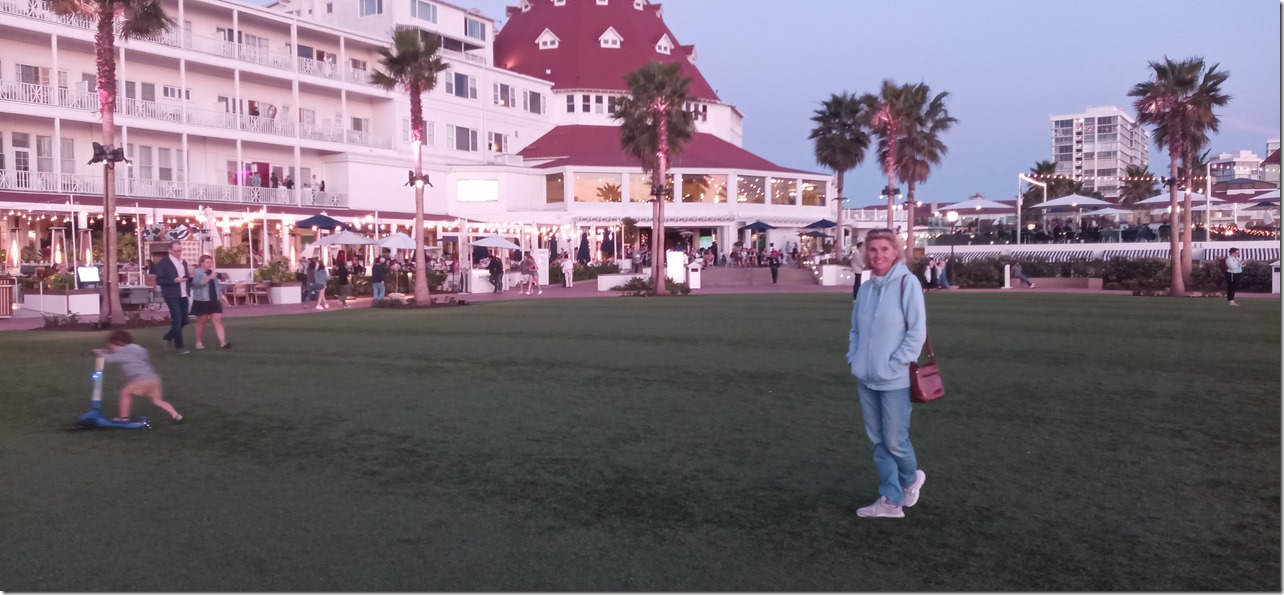
Hotel del Coronado in San Diego
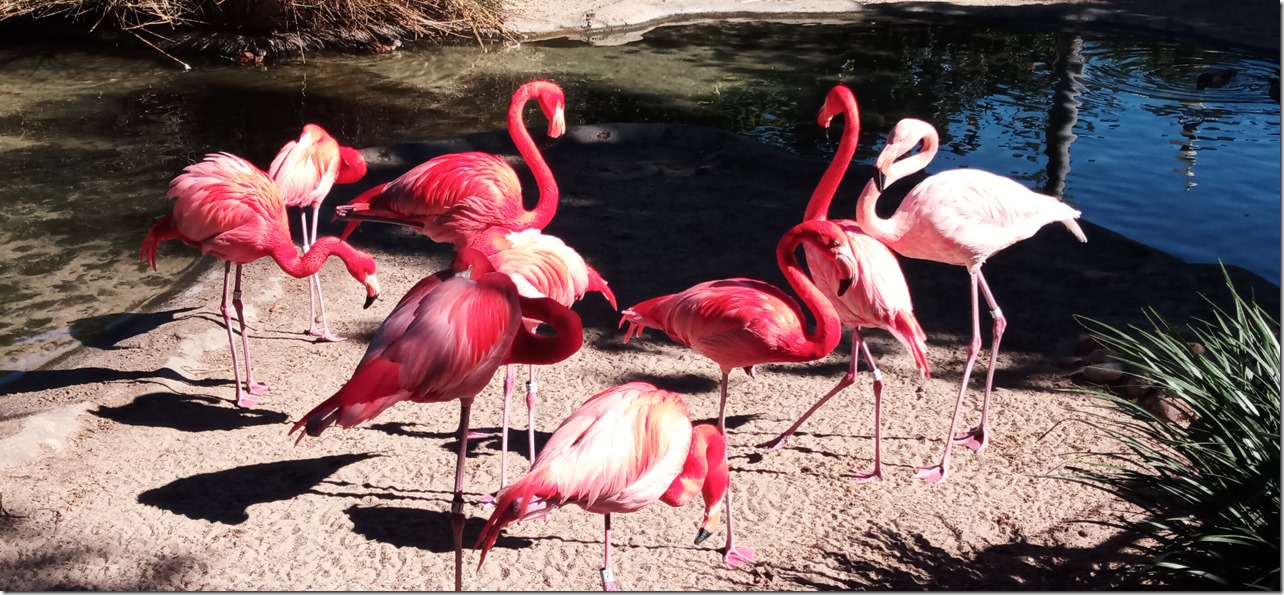
The San Diego Zoo
The shipyard that hosted us is owned by Salvador Cabrales, senior and junior (father and son), people of exquisite courtesy and availability. They treated us as if we were family, helping us in every possible way. Their shipyard is located in a strategic position sheltered from hurricanes and close to the United States to buy spare parts, and the relationship with those who, like us, entrust them with their boat is of total reliability.
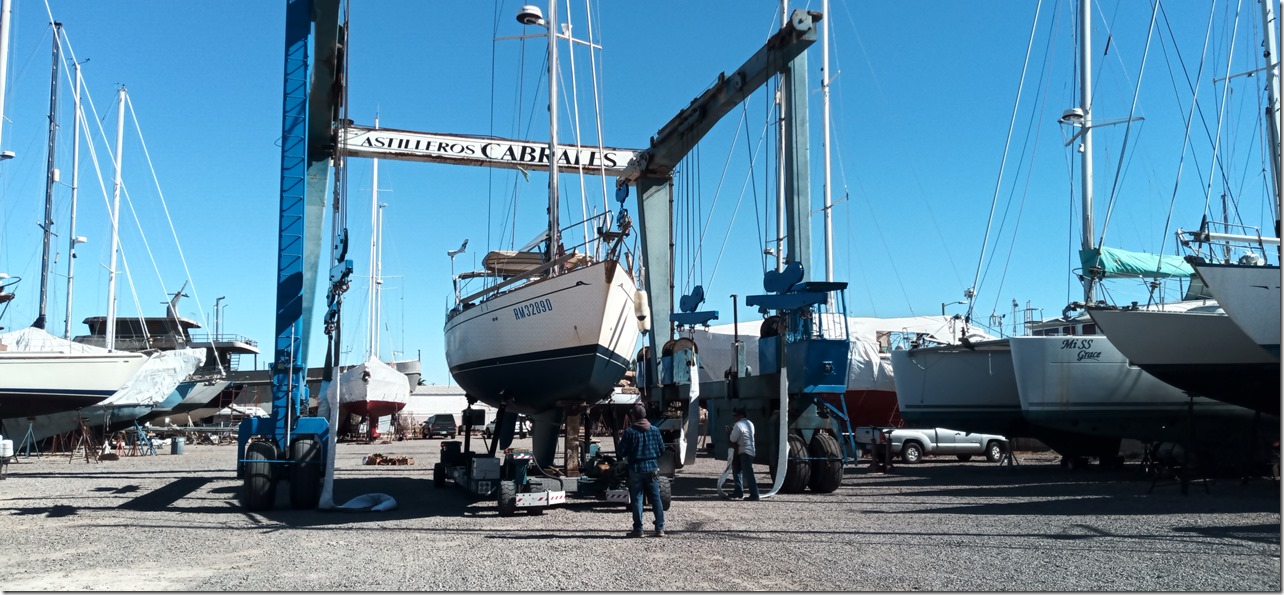
Cabrales Shipyards
We also carry in our heart Homero, the owner of the Blue Marlin restaurant. Homero welcomed us to his restaurant with a great sense of hospitality, making us feel like we were at home. Every time we were at his restaurant, where the food is delicious, we had the pleasure of his company and appreciated his stories.
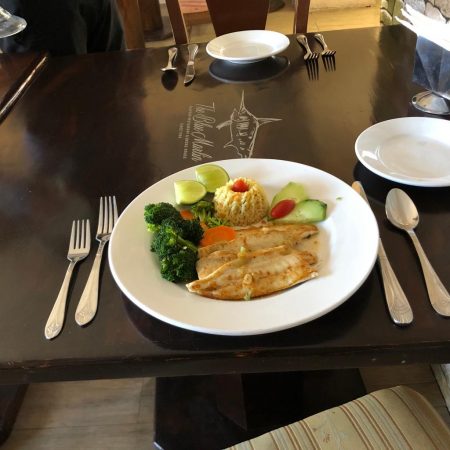
Homero’s Blue Marlin Restaurant
Although we couldn’t wait to finally start sailing again, the departure from Puerto Peñasco was veiled with sadness for leaving friends we will miss.
Puerto Peñasco
On January 4th we finally landed in Mexicali, the closest airport to our destination, Puerto Peñasco (in the image above is the monument to the shrimp fisherman, in the central square).
We immediately realized that it would be very uncomfortable to live on our boat, due to the temperature that at night dropped around 3-4 degrees. After a bit of research, we managed to find a small apartment, equipped with heating, quite close to the shipyard where we had left Zoe. We agreed for a period of 15 days in the belief that the temperature would rise and we would complete the due work on the boat. Both of these predictions have proven to be vastly underestimated. In the end we stayed in Puerto Peñasco until February 25th!
Our house (on the upper floor)
Puerto Peñasco is a town that at first strikes you for the sand that invades everything, with the streets that are either covered with it or that are just made of sand. This is not surprising as the desert is right behind the city.
Pinacate Desert
The main activity is shrimp fishing; every day several fishing boats, after loading large amounts of ice, leave the picturesque port to launch their nets. Many trucks leave every day to transport tons of shrimp to the rest of Mexico and the United States.
Merchant port
An emerging activity is tourism; condos and hotels with dozens of floors are rapidly changing the coastal landscape. The tourists are mainly from the USA, especially from Arizona; the US border is only an hour’s drive away.
We took a flight from Mexico City to Mexicali, and from there it took us about 3.5 hours to get to Puerto Peñasco by car, crossing a panorama of desert dunes whose pinkish color contrasts spectacularly with the intense blue of the sea. As soon as we arrived in the city and after deciding which apartment to rent, we went to the Cabrales shipyard to see Zoe, who appeared in excellent condition, apart from the layer of sand that covered a bit of everything. The protective tarpaulins had held up very well, the inside was dry and exactly as we had left it.
In the following days we acquired the routine of going to the shipyard around 10 am, when the outside temperature became milder; we stayed to work until sunset with a short break for lunch that we either consumed in the apartment or in the Marisco Rey kiosk where we enjoyed excellent tacos and cocktails of shrimp, octopus and crab; all seasoned with the sympathy of the family that ran this small kiosk, always crowded.
Shrimp, octopus and crab taco
Shrimp, octopus and crab cocktail
Marisco Rey Kiosk
On Sundays we generally went to visit the surroundings. In addition to the desert of Pinacate where there is also an interesting and well-kept museum, one of our destinations was an oyster farm of which we favored in great abundance and where we met a nice family who gave us some beers that we didn’t think to bring.
Oyster breeder
Birthday party at the oyster farm
Pinacate Desert Museum
We had planned several maintenance works, however various other unforeseen events made the list longer: most problems were mainly related to the long dwell time. The first “surprise” (but a bit we expected it) were the batteries, which after two years of continuous charge and 6 years of service have given forfait. To these were added several other small surprises, which led us to make two trips to San Diego and one to Tucson to recover spare parts and materials for the work. We obviously took advantage of these opportunities to enjoy a few days to visit the beautiful city of San Diego with its many attractions.
Work in progress
Sanding and preparation for painting the paramare
Hotel del Coronado in San Diego
The San Diego Zoo
The shipyard that hosted us is owned by Salvador Cabrales, senior and junior (father and son), people of exquisite courtesy and availability. They treated us as if we were family, helping us in every possible way. Their shipyard is located in a strategic position sheltered from hurricanes and close to the United States to buy spare parts, and the relationship with those who, like us, entrust them with their boat is of total reliability.
Cabrales Shipyards
We also carry in our heart Homero, the owner of the Blue Marlin restaurant. Homero welcomed us to his restaurant with a great sense of hospitality, making us feel like we were at home. Every time we were at his restaurant, where the food is delicious, we had the pleasure of his company and appreciated his stories.
Homero’s Blue Marlin Restaurant
Although we couldn’t wait to finally start sailing again, the departure from Puerto Peñasco was veiled with sadness for leaving friends we will miss.